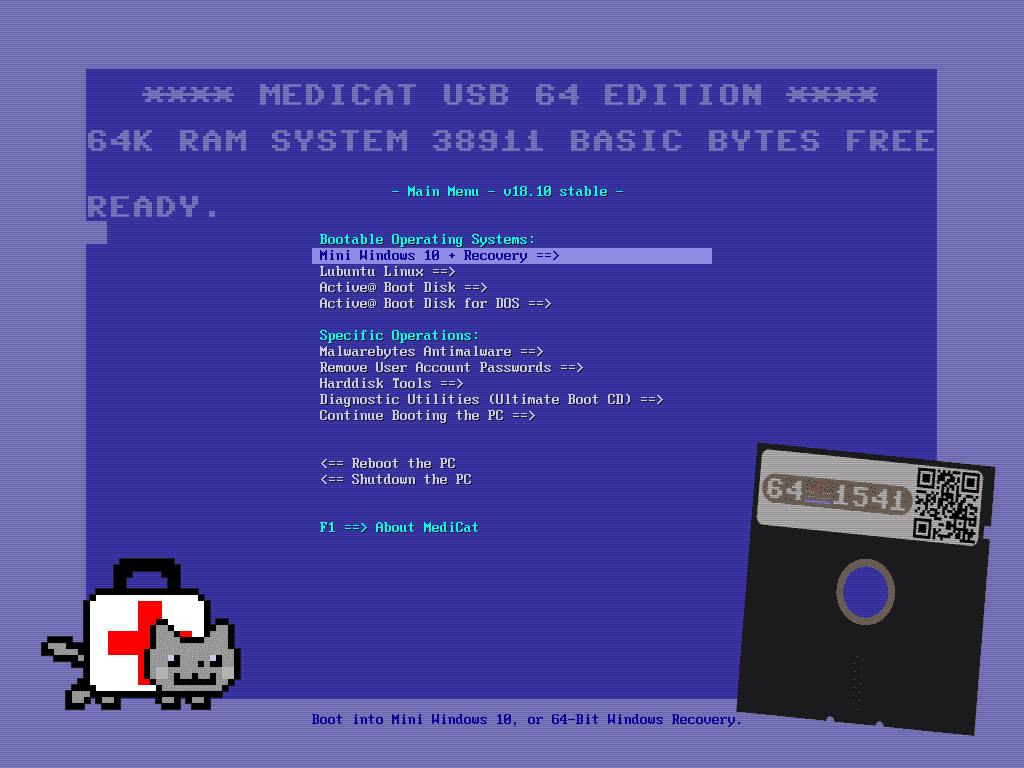
then it makes a guess and manually writes the guess and relocates) that also "lets go" and get relocated immediately. (of course by accident, a good read "might" happen out of all the repeated reads. When Spinrite does solve the puzzle it "lets" go the sector and lets the drive "re-locate" the bits in that sector to a spare sector of the drive, so the result of the puzzle solving is not lost. and Dynastat is measuring that change to "try" and discern a "pattern" or a puzzle piece that works to solve the error correction engine puzzle and "invent" a perfect read result. Imperfect or "bad bits" do change (a lot) and seem to move up and down while being re-read.

but real-world bits tend to change a little bit. Perfect "bits" don't move up or down, their certainty and uncertainty "never" change. but you can back down from either side of it. Put another way the y-axis Zero value is 100% certain and either side is from 100% certain. so it sort of "wraps around" in uncertainty. If this were a "horizontal tube graph" it might be more intuitive since at the extreme edges of the graph, where Uncertainty is Maxed out for a "appears 1" or "appears 0" they are just as likely to be the opposite. and that's why the center line is labeled with a its a question of how certain any one bit is and which value its appearing "mostly" as. meanwhile as the same sector is read over and over again to a real-time data graph of information about the same bits the levels can "change" moving up and down - or really "closer" or "further" from the "certain-line". that is "mostly a -1-" or "mostly a -0-". in the direction that they "most" show up as. īut if over repeated re-reads those same bits sometimes "flip" from "1" to "0" or vice versa, then their gets "uncertainty" so they drift away from the center line. And their "digital wiggle" tracks stay for.

If they are always the same value, a "1" or "0" their uncertainty "Stays" very close to the center line, because the doubt is very small. Over many successive reads of the same sector, the bits are over and over. The reader for a single read decides there is or very little doubt, that a bit is a "1" or "0". Close to the there is "little" or "no" uncertainty. as far as the ECC engine is concerned its fixed, or its not fixed.
#SPINRITE 6 ALTERNATIVES SOFTWARE#
but that seems to be up to the judgement of higher up software decision makers in the firmware, bios, and operating system. The drive can also try to "re-read" the sector to try blindly to get a "perfect" read.

the drive reports that sector can not be read. Some of the bits represent a checksum and the engine can go to work reconstructing the string if it determines a read was "bad" or "no good". Basically the hard drive has a "cut off point" or threshold at which it decides an analog signal being read from the drive is a "1" or a "0" and reports a string of bits to an error correction engine. The "slides" from Left to Right along the sector bit stream, with a important Left-hand which tells you some very important things.Įlsewhere in the Spinrite 5 - Owner's Guide, are drawings and descriptions of "Flux Reversals" and some theory on how they are used to store data in a somewhat loose, variable way which ends up storing digital "1's" and "0's" in an signal format on the "spinning rust". though some can be switched by hardware jumpers or firmware/software by the end user. its kind of decided by the hard drive manufacturer at the factory. Old school most sectors were 512 bits, today they are more likely to be 4096 bits. Mostly its a like on a gun or instrument that draws your attention to just a few bits being read in a sector.
#SPINRITE 6 ALTERNATIVES FULL#
However the Spinrite 5 - Owner's Guide has a color snapshot, and when it runs on your computer Spinrite 5 or Spinrite 6 displays the information in full color. That is "you don't see it" unless you know exactly which 8-bit graphic characters to "look for". The key thing is that many descriptions display the chart in monochrome or b&w and loose the ASCII "focus window" that pops up in the center of the display when it goes to work.


 0 kommentar(er)
0 kommentar(er)
